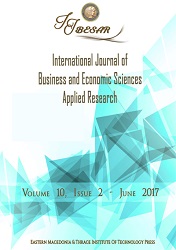New Insights on Audit Quality
New Insights on Audit Quality
Author(s): Ya-Fang WangSubject(s): Accounting - Business Administration, Corruption - Transparency - Anti-Corruption
Published by: Τεχνολογικό Εκπαιδευτικό Ίδρυμα Ανατολικής Μακεδονίας και Θράκης
Keywords: audit quality; dual attestation; auditor locality; auditor tenure;
Summary/Abstract: Purpose: The mechanism of dual attestation system is to enhance audit quality through bonding legal liability of two signing partners. However, an intense debate regarding the retention or abolition of dual attestation system was discussed in recent years, because the amended Accountant Act have disputes over auditor’s legal liabilities attributed to the Bardon and Rebar frauds. This study thus examines the audit quality of dual attestation system by exploring whether auditor locality and auditor tenure can affect audit quality simultaneously. Design/methodology/approach: This study investigates whether auditor locality and auditor tenure can affect audit quality simultaneously, using a regression model to examine my research issues. The sample is restricted to Taiwan’s public listed companies of Big Four audit from 2002-2013 because data collection involves significant manual effort in reading individual auditor information of Big Four and searching lead/concurring auditor-client distance of Big Four. Financial data is obtained from Taiwan Economic Journal database (TEJ). Finding: I present evidence that audit quality is affected by auditor locality and auditor tenure, and differential portfolio of auditor locality and auditor tenure have different effects on audit quality under the dual attestation system. Research limitations/implications: This study has three limitations. First, the sample is limited to the clients of PwC, Deloitte, EY and KPMG because the required information for practice offices of lead and concurring auditors is only available for Big 4. Second, although discretionary accruals is a noisy proxy for audit quality and it does not necessarily reflect actual audit quality, it is widely used in the literature to provide rich insights into audit quality. Three, sample size is limited because of insufficient data to compute discretionary accruals. Originality/value: This investigation extends previous research on audit quality by examining the geographic proximity and auditor-client relationship. Furthermore, this study contributes to the debate regarding the retention or abolition of dual attestation system.
Journal: International Journal of Business and Economic Sciences Applied Research (IJBESAR)
- Issue Year: 13/2020
- Issue No: 1
- Page Range: 21-28
- Page Count: 8
- Language: English

